Transcription of Overcoming Barriers Speaking Valve Use: 8/8/13 …
1 Overcoming Barriers to Speaking Valve Use: Success Through Teamwork8/8/13 Nicole Riley, MS CCC SLPD irector of Clinical EducationPassy Muir to Passy-Muir s Event Webinar: OVERCOMINGBARRIERS TOSPEAKINGVALVEUSES uccess Through Teamwork If you have not registered for this event, go to the Education Portal to complete your registration. This is an Audio Broadcast meeting, which means that the audio signal will be sent out through your computer. A toll telephone number will also be gyppavailable. Use the Audio section of the file menu for audio options. Call-in toll number (US)+1-415-655-0001 Access code: 666 956 524 The audio for this meeting is one-way, so the presenter will not be able to hear the attendees, nor will the attendees be able to hear each other. If you have a question for the presenter, please use the Q and A (not the chat box), to the lower right of meeting window. After the webinar ends, you will have an opportunity to fill in your evaluation on the Passy-Muir Education Portal If you have a technical issue, please call Passy-Muir at 949-833-8255, or email Daniel at TOSPEAKINGVALVEUSED isclosure Statement Passy-Muir, Inc.
2 Has developed and patented a licensed technology trademarked as the Passy-Muir Tracheostomy and Ventilator Swallowing and Speaking Valve . This t ti ill f iil th bidpresentation will focus primarily on the biased-closed position Passy-Muir Valve and will include little to no information on other Speaking Riley, MS CCC-SLPD irector of Clinical EducationPassy-Muir 783-3755 Disclosure: Financial Employee of Passy-Muir No relevant nonfinancial relationship for Passy-Muir Barriers and practical strategies to overcome Barriers to Passy-Muir Valve UsePassyMuirValve to implement a Passy-Muir a tracheostomy and Case StudiesMy Story at BarlowOvercoming Barriers to Speaking Valve Use: Success Through Teamwork8/8/13 Nicole Riley, MS CCC SLPD irector of Clinical EducationPassy Muir make the Passy-Muir Valve a standard of care?Benefits of the Valve : Voice/Speech Production Improved swallowing Secretion management Secretion management Restores positive airway pressure Restores PEEP Weaning Decannulation Quality of LifeGoalCommon Barriers to this Goal Myths, misconceptions and excuses Sociological IssuesBarrier 1: We can t deflate the cuff because the patient will aspirate Amathieu, R.
3 , et al. British journal of (2012): , Daniel G., et al. Journal of Intensive Care Medicine (2002): deflation REDUCES aspiration Laryngeal elevation is improved Aspiration rate is lower Reduced cases of silent itiaspirationDing, R. & Logeman, JA, Head and Neck. 2005 Sep;27(9) Barriers to Speaking Valve Use: Success Through Teamwork8/8/13 Nicole Riley, MS CCC SLPD irector of Clinical EducationPassy Muir Deflating the tracheal cuff in tracheostomized patients shortens weaning, reduces respiratory infections, and probably improves swallowing Hernandez, Gonzalo, et al. Intensive care medicine (2013): Way Valve Reduces Aspiration Further Improved scores on penetration-aspiration scale1 Restores expiratory airflow2 Improves laryngeal l2clearance2 Improved secretion rating scale3 Maintains lung volumes4 Restores subglottic air pressure51. Suiter, D. Head and Neck. 2005. Sep;27(9):809-132.
4 Prigent, Helene. Intensive Care Med. 2012 June38(1) Blumenfeld, L. Oral Abstract Presented at Dysphagia Research Society Annual Meeting 20124. Gross, R., et al. (2006). The Laryngoscope, 116:753-7615. Eibling, D., & Gross, R. (1996). Annals of Otology, Rhinology, & Laryngology, 105(4):253-8. Barrier 2: The patient has too many secretions Before Passy-Muir ValveAfter Passy-Muir ValveBarrier 3: We need to wait until the patient is on a trach collar Overcoming Barriers to Speaking Valve Use: Success Through Teamwork8/8/13 Nicole Riley, MS CCC SLPD irector of Clinical EducationPassy Muir Atrophy Mechanical ventilation can cause atrophy, and injury of diaphragmatic muscle fibers Patients in intensive Patients in intensive care lose about 2% of muscle mass a day during their illness. 1 Muscle weakness predicts pharyngeal dysfunction21. Jaber, al, 2011; Griffiths, BMJ, 19992. Mirzakhani, H.
5 Et al Anesthesiology. 2013 Use of the Passy-Muir can facilitate weaningBarrier 4: The patients are too sick Patients should be medically stableBarrier 5: The Ventilator will continuously alarm 500cc0 Barriers to Speaking Valve Use: Success Through Teamwork8/8/13 Nicole Riley, MS CCC SLPD irector of Clinical EducationPassy Muir your pressure alarms appropriatelyBarrier 6: Tracheostomy tube is too large Tracheostomy Tube is Too LargeHernandez, Gonzalo, et al. Intensive care medicine (2013): , Daniel F., et al. Respiratory care (2013): 7: Absence of a Team Tracheostomy Teams Affordable Care Act Joint CommissionTracheostomy Teams Increased Speaking Valve use Improved decannulation time Reduce Length of Stay (LOS) Reduced costsSpeed, Lauren, and Katherine E. Harding. Journal of Critical Care (2012). Overcoming Barriers to Speaking Valve Use: Success Through Teamwork8/8/13 Nicole Riley, MS CCC SLPD irector of Clinical EducationPassy Muir TeamRole of Speech-Language Pathologist Help assess airway patency Assess swallow ability and diet recommendations Assess vocal ability Speech/swallow exercises Monitor tolerance Recommend wear time Educate caregiversRole of Respiratory Therapist Help assess airway patency Adjust and monitor ventilatorThil Technical troubleshooting Monitoring of pt status Cough/breathing techniquesBarrier 8: Lack of Knowledge/InconsistencyEducate Be a leader Physician support is KEY!
6 Pulmonologists, RTs, SLPs, nursing Use Passy-Muir webinars/inservicesOvercoming Barriers to Speaking Valve Use: Success Through Teamwork8/8/13 Nicole Riley, MS CCC SLPD irector of Clinical EducationPassy Muir Improvement Protocol to assess alltracheostomy patients for Passy-Muir Valve within 72 hours of admission Criteria: Tolerate cuff deflation Patent upper airway 48-72 hrs post trach Medically stable FiO2<60% PEEP<10 PIP<40 CompetencyNameWatched vent application webinarVerbalized understanding of protocolPerforms procedure for placing Passy MuirValveJohn Doe Matt Smith Jane Jones Henry Cooper Andrea Thompson Margaret Miller Dave Parker Track your compliance SLP completes Passy-Muir Valve evaluation form within 72 hours of admission OR states reason patient was not a candidate. 98% compliance for PMV assessment at BarlowBarrier 9: No ProtocolTracheostomy Weaning Protocols Increase the amount of patients decannulated and shorter length of time.
7 The tracheostomy tube decannulation process is well suited for therapist-implemented protocols Development of Protocol Passy-Muir Valve as part of ventilator weaning and decannulation protocolprotocol Specific to your ventilator Don t reinvent the wheel Centers of Barriers to Speaking Valve Use: Success Through Teamwork8/8/13 Nicole Riley, MS CCC SLPD irector of Clinical EducationPassy Muir Flow Chart for DecannulationSuccess! Earlier decannulation times Reduced restraint use as patients were less anxious Individual success storiesCase 56 y/o female Dx: Pulmonary Fibrosis 2 month vent-dependentAfter PMV Placement: Started a diet Weaned and Portex #8 Typical weaning methods faileddecannulated in less than 3 weeksSummary Be a leader Provide research to support your information Educate the clinicians and MDsand MDs-Use Passy-Muir webinars-Consider live webinars or inservices Implement a protocol Competencies Build your team!
8 Q and APresenterNicole Riley, MS CCC-SLPD irector of Clinical EducationPassy-Muir 783-3755 Disclosure: Financial Employee of Passy-Muir No relevant nonfinancial relationship Barriers to Speaking Valve Use: Success Through Teamwork8/8/13 Nicole Riley, MS CCC SLPD irector of Clinical EducationPassy Muir CEU s for this Course You will have 5 days from the time this courses ends to complete the evaluation, which is required to receive credit. Look in your email for a reminder link, or type this into your Itt b dd bInternet browser s address bar: If you are a late registrant, the meeting code is: passy752 If you are already registered, you do not need to use this code Overcoming Barriers to Speaking Valve Use: Success Through Teamwork Here are some links and references to get you to overcome your Barriers at your facility! Evidenced-based research on the Passy-Muir Valve : Centers of Excellence (COE): Policies and Procedures of our COE: Barlow s Passy-Muir Valve Protocol- FEES study, by Lisa Blumenfeld Passy-Muir Valve Decannulation Diagram References: Cuff Deflation Benefits: Amathieu, R.
9 Et al. (2012). Influence of the cuff pressure on the swallowing reflex in tracheostomized intensive care unit patients. British Journal of Anaesthesia. Oct;109(4):578-83 Davis, et al. (2002) Swallowing with a Tracheotomy Tube in Place: Does Cuff Inflation Matter? Journal of Intensive Care (3): 132-135. Ding, R. & Logeman, J. (2005). Swallow Physiology in Patients with Trach Cuff Inflated or Deflated: A Retrospective Study. Head & Neck. Sep;27(9):809-13 Hernandez, G. et al. (2013). The effects of increasing effective airway diameter on weaning from mechanical ventilation tracheostomized patients: a randomized controlled trial. Intensive Care Medicine. Jun;39(6):1063-70 Improved Swallowing with Passy-Muir Valve : Elpern, E., et al. (1994). Pulmonary Aspiration in Mechanically Ventilated Patients with Tracheostomies. Chest, 105:583-586.. Eibling, D., & Gross, R. (1996).
10 Subglottic Air Pressure: A Key Component of Swallowing Efficiency. Annals of Otology, Rhinology, & Laryngology, 105(4):253-8. Prigent, H. et al. (2012). Effect of a tracheostomy Speaking Valve on breathing-swallowing interaction. Intensive Care Medicine. Jan;38(1):85-90. Suiter, D. et. al. (2003). Effects of Cuff Deflation and One Way Speaking Valve Placement on Swallow Physiology. Dysphagia, 18: 284-292. Blumenfeld, L. (2012). The effect of tracheostomy Speaking Valve use on disordered swallowing {abstract}. Oral Abstract Presented at Dysphagia Research Society Annual Meeting. Trach tube downsizing benefits: Hernandez, G. et al. (2013). The effects of increasing effective airway diameter on weaning from mechanical ventilation tracheostomized patients: a randomized controlled trial. Intensive Care Medicine. Jun;39(6):1063-70 Fisher, D. et al. (2013).
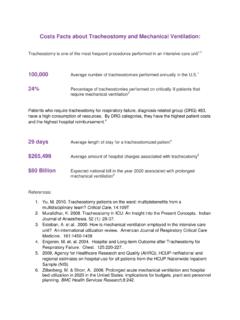

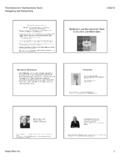
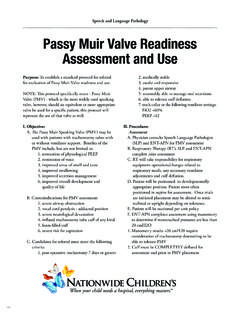
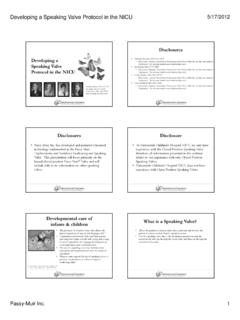

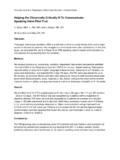
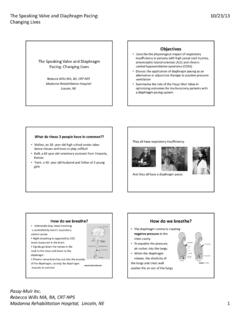

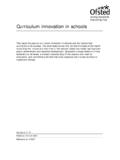
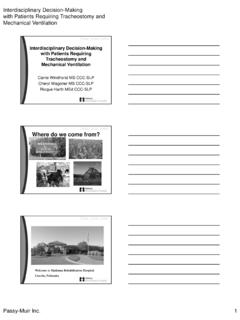
![-:HSTCQE=UX]ZXU - OECD.org](/cache/preview/9/0/f/7/1/8/4/1/thumb-90f7184114476572160c1ff26e5abd2d.jpg)
